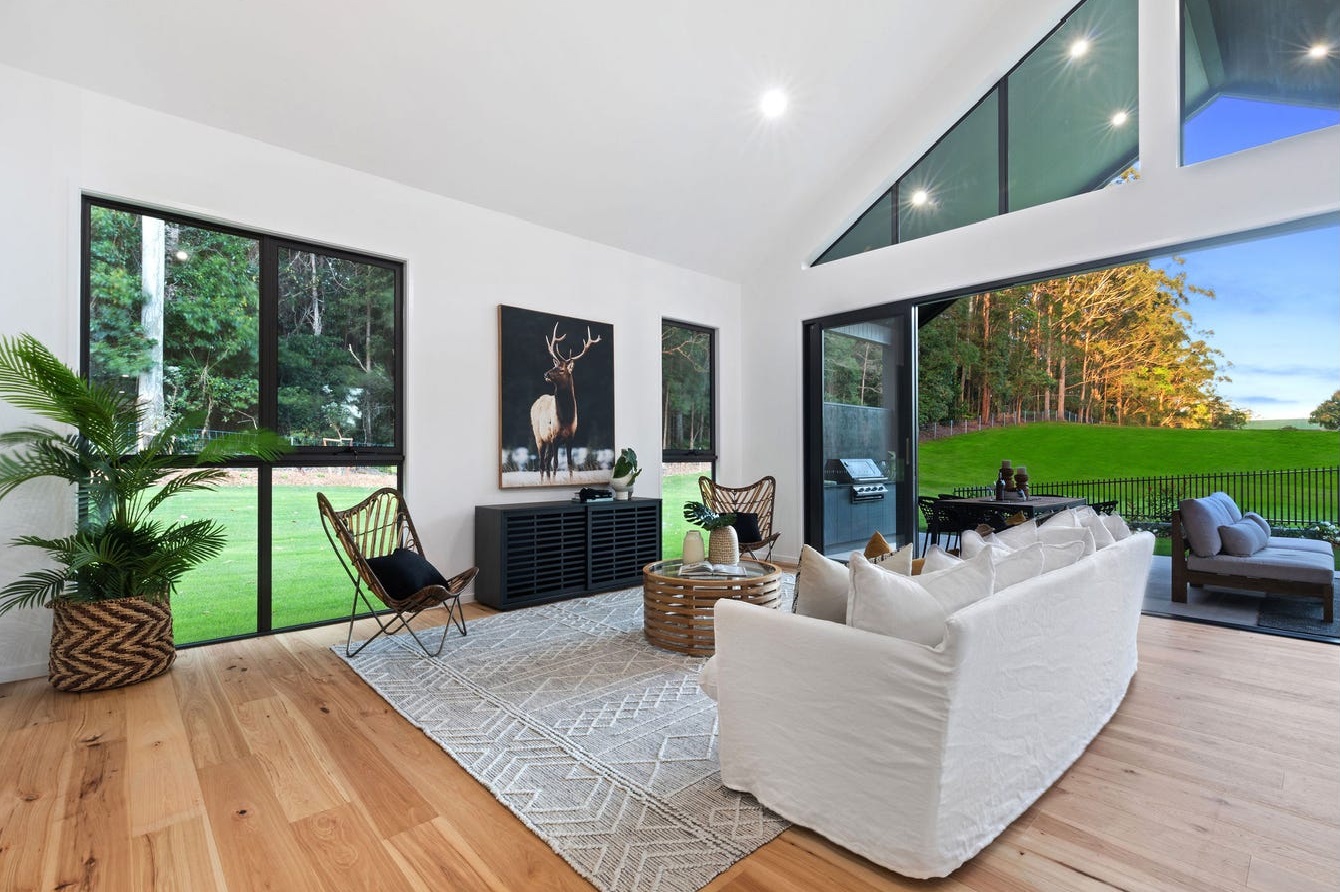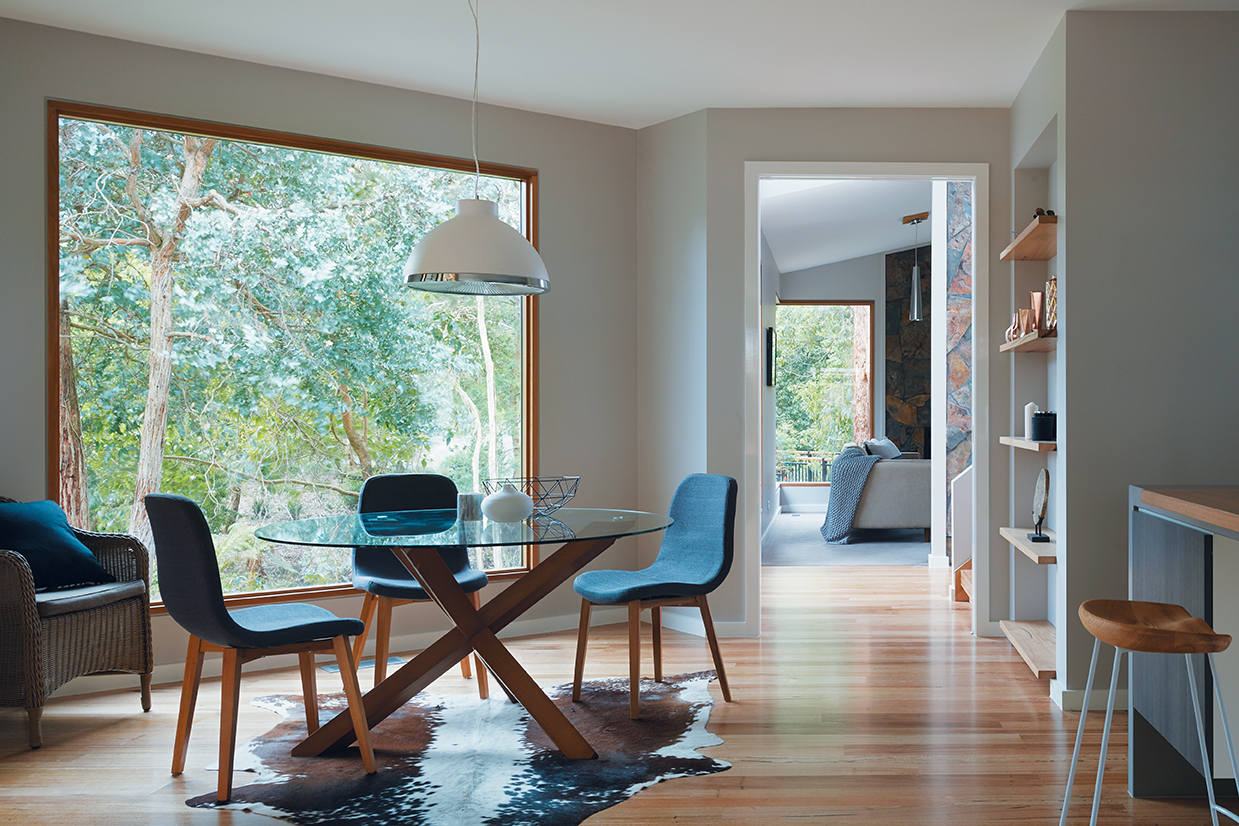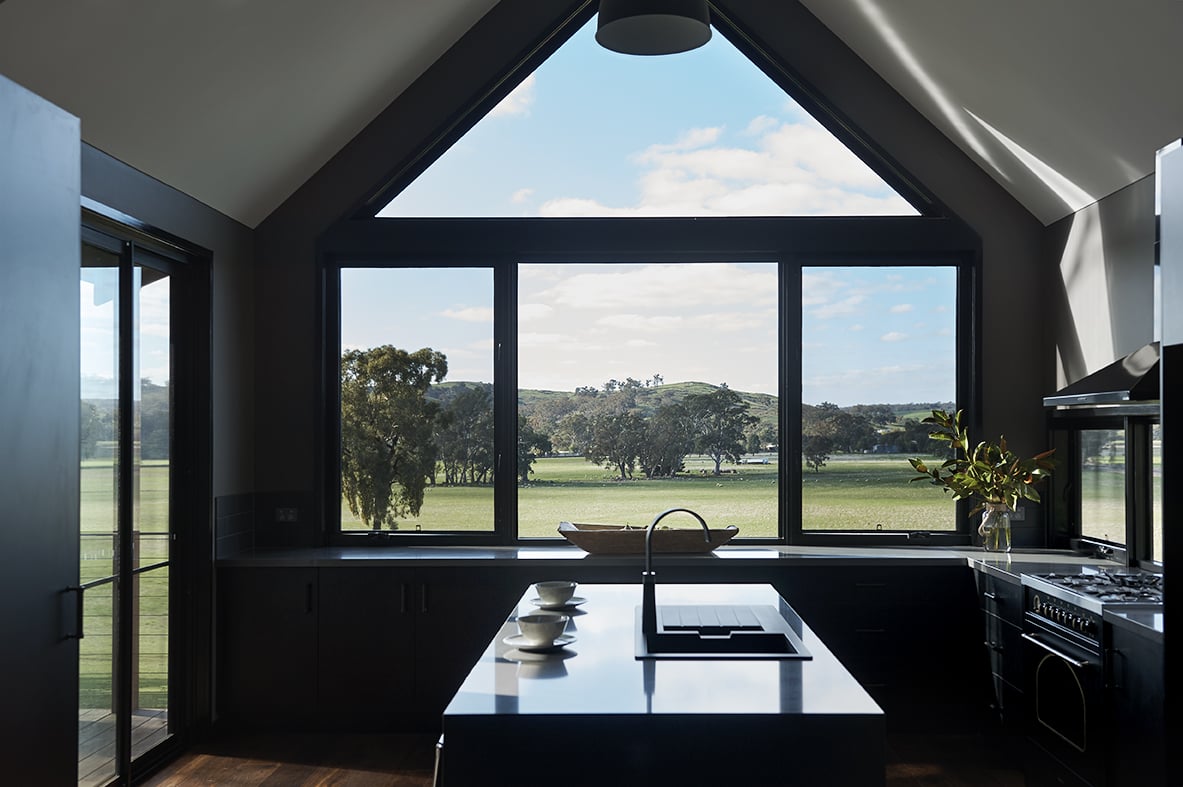Choosing the Right Windows and Doors
Learn how to choose the right windows and doors. Discover the most cost-effective windows, explore different window styles, and find out which type of window is best for your home.
When beginning the window and door selection process, the choices can seem overwhelming, especially when you have energy efficiency in mind! But don’t worry—Stegbar is here to help you make a decision that will enhance your home's comfort and star rating.

There are several key factors to consider when choosing windows and doors. These include where you live, the type of frame, the door and window styles, and the type of glass used. Let's break down the process so you can make an informed decision and decide which type of window is best for you.
Where you live
Your location in Australia plays a significant role in determining which type of window is best for your home. Australia is divided into eight climate zones, each with unique characteristics and building requirements. For instance, homes in Far North Queensland, which experiences hot and humid summers, will need different windows compared to homes in Melbourne or Canberra, which are known for their very cold winters. Cities like Sydney and Adelaide, which have both hot summers and cool winters, require a balanced approach.
To find out which climate zone you are in, visit the government’s climate zone website and enter your address. This will help you choose the most suitable door and window styles for your climate.
Frame types
When choosing windows and doors, the frame type is crucial for both style and performance. Here are the most popular frame types:
Aluminium window and door frames
Lightweight, strong, and durable, aluminium is the most commonly used material for window frames in Australia. It's a staple in cost-effective window and door choices and results in low maintenance while providing a sleek, modern look. However, aluminium is a good conductor of heat and cold, which can affect energy efficiency.
The perfect choice for you: Explore Stegbar’s Residential Aluminium windows and doors or the premium Alumiere range of windows and doors for a bolder look.
Timber window and door frames
Despite being more expensive than other options, timber frames offer the highest levels of energy efficiency of all window and door frame materials. They also possess a natural beauty and can be painted in a colour to match your home's aesthetic. We recommend using lighter coloured paint on your timber to reflect heat and extend the life of your windows. Timber requires more maintenance and care, especially in extreme weather conditions – but it can be worth it if you like the look when browsing door and window styles.
The perfect choice for you: Explore Stegbar’s Timber windows and doors.

Composite window and door frames
Composite frames combine timber and aluminium to provide durability and strength on the outside and excellent thermal performance on the inside. Composite frames also deliver the beauty and warmth of timber on the inside which can be painted to match your style. However, due to the complexity of manufacturing, this door and window style is typically more expensive.
The perfect choice for you: Explore Stegbar’s Siteline windows and doors.
Thermally broken window and door frames
This innovative frame type uses a polyamide strip (a material similar to nylon) to separate the inside and outside of the frame, significantly improving thermal performance. It maintains the sleek profile of aluminium while enhancing energy efficiency. So, if you’re asking, “Which type of window is best for energy efficiency?” This may be your answer!
The perfect choice for you: Explore Stegbar’s Envira Collection of thermally broken windows and doors.
Window Types
When considering which type of window is best for your home, it's important to look at both functionality and aesthetics. Here are some common window styles:
- Awning: Hinged at the top and opening outward, providing good ventilation while protecting against rain. Awning windows are the most energy efficient window type as they are more firmly sealed when closed which reduces the impact of weather conditions.
- Sliding: Move horizontally along a track, ideal for spaces where you don't want windows projecting outward and where you want excellent ventilation.
- Stacking: Similar to sliding windows but with multiple panels that stack behind one another, offering a wide opening.
- Fixed: Does not open, used primarily for letting in light and providing an unobstructed view.
- Double hung: Usually include two operable panels that move up and down to allow excellent ventilation. Glass sashes remain inside the frame so don’t protrude when opened.
- Casement: Hung on the left or right hand side of the frame, the window opens outward, similar to a door, by using a winder. Casement windows may have more than one operable section in a frame.
- Louvre: Consisting of several horizontal blades of glass, louvres can be opened or closed to the desired angle using a lever. These are popular in warmer climates as they offer supreme ventilation when fully opened.
- Bifold: Used to open up large spaces, bifold windows include two or more sections that operate along a track with sections opening back on each other.
- Gas strut: typically used to connect a kitchen to an al fresco area, these windows are hinged at the top and open nearly 90 degrees to provide an unobstructed opening.
Door types
Selecting the right door style is just as important as windows. Consider these options:
- Hinged: Traditional doors that swing open. Commonly used for main entrances, you can also pair two hinged doors together for a classic French door combination.
- Sliding: Saves space by moving along a track, perfect for patios and balconies.
- Stacking: Multiple panels that stack behind one another, great for creating large openings to outdoor areas.
- Bi-fold: Folds back in sections to provide a wide, open entrance, ideal for seamlessly connecting indoor and outdoor spaces.
Glass types
The type of glass you choose can significantly impact the performance and energy efficiency of your windows and doors. Here are the main types to consider:
- Clear glass: A standard glass type that allows maximum light and heat to enter. It does not offer any performance improvements.
- Toned glass: Also known as tinted glass, this type minimises the amount of light and heat entering a home. It’s particularly suitable for warmer climates, reducing glare and the need for artificial cooling.
- Low E glass: Has a transparent coating that reflects heat while letting in light. It , making your home more comfortable by reducing heat transfer.
- Double glazing: Consists of two panes of glass with a space in between, often filled with argon gas. This option provides excellent thermal and acoustic insulation, keeping your home at a comfortable temperature for longer.
Stegbar has a range of glass options to complement our energy efficicent frames. These include glass types that have enhanced acoustic, security and privacy properties. More information about glass types and options can be found in our comprehensive guide – Glass types explained.

Stegbar's Good - Better - Best model for aluminium windows and doors
Earlier we mentioned that Australia is divided into eight different climate zones, each with their own characteristics and building requirements. Taking these into consideration, Stegbar offers a "Good - Better - Best" model based on different performance levels and budget considerations. This model is based on aluminium frames and glass options that will help you achieve a 7 Star energy rating. Note that these recommendations may differ depending on your address and the applicable climate zone.
NSW/SA – Climate Zones 4 to 8 (Mixed Climates)
|
|
Window Type |
Frame Type |
Glass Type |
|
Good |
Awning |
Aluminium |
Single glazed with Low E coating |
|
Better |
Awning |
Aluminium |
Double glazed |
|
Best |
Awning |
Aluminium |
Double glazed with Low E coating |
VIC/ACT – Climate Zones 6, to 8 (Cool Climates)
|
|
Window Type |
Frame Type |
Glass Type |
|
Good |
Awning |
Aluminium |
Double glazed clear glass |
|
Better |
Awning |
Aluminium |
Double glazed with Low E coating |
|
Best |
Awning |
Thermally Broken Aluminium |
Double glazed with Low E coating |
QLD – Climate Zones 1 to 5 (Warm Climates)
|
|
Window Type |
Frame Type |
Glass Type |
|
Good |
Sliding |
Aluminium |
Single glazed with Low E coating |
|
Better |
Sliding |
Aluminium |
Grey toned glass with Low E coating |
|
Best |
Sliding |
Aluminium |
Grey toned double glazed with Low E coating |
Are you ready to choose your windows and doors?
We’re here to help you navigate the complex decisions when choosing windows and doors for your home or project. For more advice on which type of windows and doors are best for you, please feel free to contact our team or visit one of our showrooms.
Your Cart
QUOTES
x0No products in the Quote Drawer.
Your Stegbar Quote
item(s)Attach Documents(Plans, Reports, Photos)
Installation
Product Selection Summary
No products in the Quote Drawer.
Your Quote
item(s)Quote submitted
Thank you for your quote request.
We look forward to helping you with your project.
You will receive an email confirming your enquiry number.
A Stegbar team member will contact you within two business days to discuss your project.

